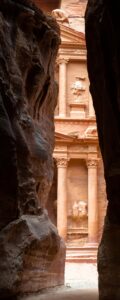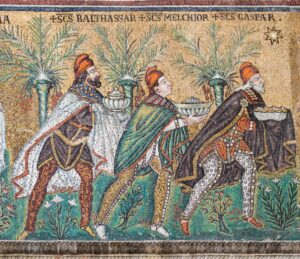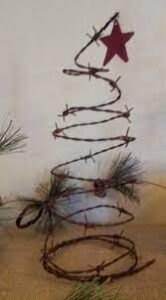 Christmas is well and truly over and today is Epiphany. The remains of that day in December have been long eaten. The last mince pie signalled the end of what has increasingly become a secular holiday, given over to gift giving and delays in getting anywhere. Our Christmas tree will remain until Candlemas. The hymns of 2nd February lack the gentleness of the Yuletide but have the robustness of the Presentation of Christ, the Circumcised, in the Temple.
Christmas is well and truly over and today is Epiphany. The remains of that day in December have been long eaten. The last mince pie signalled the end of what has increasingly become a secular holiday, given over to gift giving and delays in getting anywhere. Our Christmas tree will remain until Candlemas. The hymns of 2nd February lack the gentleness of the Yuletide but have the robustness of the Presentation of Christ, the Circumcised, in the Temple.
“Immortal, Invisible, God Only Wise” replace “Away in the Manger”.
Then at Christmas there was the excruciating King’s speech; it is interesting how we accepted the starchy nothingness of his mother for so many years, but then nobody bothered with her ratings. The intrusion of such speeches is like making sure you clean your teeth. It’s wholesome, takes little time, but of what relevance? It is certainly not in placing the holy liniment on the aristocratic brow sometime at a costly Coronation this year. The Carolingian speech, if not to be considered high-falutin’ dribble, should be followed by funding to the needy, rather than having an unnecessarily tawdry, increasingly irrelevant ritual such as crowning Charles.
We give the grandchildren cash for Christmas and for that matter their birthdays. Equal recognition for all, age notwithstanding. Only one variation is when they reach 21 years, each gets an extra 21 dollars.
After all, in regard to Christmas, as reported in The Economist, one Joel Waldfogel of the University of Minnesota identified a “deadweight loss” when he studied the difference between the cost of seasonal gifts and how much their recipients valued them after they had accounted for exchanges and put sentimental value aside. Today he says that on average cash spent on another person yields around 85% of the benefit of cash they spend on themselves. Although gift-giving may make some people happy, it’s “a lousy way to allocate resources.”
No reason for not being economically rational at Christmas; nobody is trying to pass through the eye of a needle, especially after Christmas.
Statues of Women
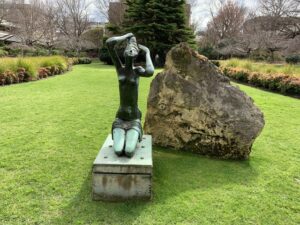
There she was, in her Emma Peel black ensemble striking her Avenger pose. Professor Clare Wright, her booted foot on the plinth of the statue of ‘Sofia’ by Herman Hohaus at LaTrobe University Bundoora Campus, which apparently typifies the allegorical depiction of women in statues. The garden is empty; no students in sight playing homage to this carving.
This Professor of History’s comments have excited a great number of responses since she made the observation that there were far more statues of males than females in Victoria. The figure of nine to about 500 was quoted. She wanted redress, and predictably the Melbourne City Council responded by scrounging three worthy women from the archives to have statues made of them and plonked who knows where.
Now a brass life size figure costs $40,000 upwards, and if the ultimate aim of Professor Wright is to have an equal number of female statues scattered around the city and suburbia, it would be at a cost rivalling the Coronation of Charles Rex. Rather, let us reduce the number of statues of men to nine. Would that satisfy Professor Wright? After all, statues after unveiling stand mute, unnoticed, hidden, defaced.
There is one statue, which was once placed prominently at the corner of Point Nepean Road and Bay Street Brighton. The subject of the statue, Tommy Bent, was a crook. The statue has now been moved to what is described as an inauspicious location just off Bay Road. Next to the statue a beautifully crafted public fountain, of Italian marble, provides a re-hydration station for the many cyclists that make their daily commute to and from the city for work. It might be said that this fountain dedicated to his wife Elizabeth Bent may ultimately come to be most cherished by locals, because it at least has a useful function.
Take Field Marshall Blamey and his prostitute trail. He is commemorated by a statue standing erect in a jeep at the corner of Birdwood Drive and the Governor’s Drive. Perhaps it would be appropriate to have the Madame Brussels condom dispenser next to his statue to commemorate in addition, the long line of distinguished parliamentarians who used her services and that of her successors, maybe carved in the form of the parliamentary mace which ended up one eventful night in her brothel.
Professor Wright has started me thinking. Between 1837 and 2022, there have been only 51 years when our monarch was a king. Do you know how many statues there are of Queen Victoria in Australia? Nine, plus a monument in Geelong – the same number as in London alone. Pray, what did those worthy queens do for women’s rights, and for that matter for the progress of civilisation. There are only seven of George V, four of which are in Victoria; two of Edward VII, and George VI gets a consolation prize of a couple of gates. Elizabeth II has four, including one in Adelaide which is a real real tribute to longevity. The number of statues across the globe of Queen Victoria may just reflect a time that is passing, in that government – particularly local councils – do not have the spare cash to build a folly to a worthy. If it is functional like gates or barbed wire, it doesn’t cost much to label it such as the King Charles III Stretch of Barbed Wire in the Kimberley.
Statue construction these days tends to be of sporting heroes and it seems fitting when the fans embellish his statue with their own dedication. Sporting bodies as the prototype of the new religion are just going through an iconophile phase, a sign of their prosperity. It is a pity that the statue of Warne when periodically venerated by his fans resembles a rubbish heap in the alleyway behind an inner city café.

Personally I have only sought out two statues – one was the Little Mermaid overlooking the Baltic Sea in Oslo; the second, the evocative sculpture of John Betjeman at the Paddington train station, peering upwards towards the roof of the monumental station that he in life strove successfully to save.
In the end I suspect Professor Wright has a very traditional view of sculpture. In another age she probably may have promoted statues of Queen Victoria in every town in Australia – maybe not – if only to ensure gender equality.
 We at home have our own sculpture of one of the Pleiades carved by a Yorta Yorta man and painted by a Yorta Yorta woman. The Pleiades are the seven daughters of the Titan god Atlas and the ocean nymph Pleione. They look down upon us from their celestial home. The representation we have is made from mallee wood. It is superb.
We at home have our own sculpture of one of the Pleiades carved by a Yorta Yorta man and painted by a Yorta Yorta woman. The Pleiades are the seven daughters of the Titan god Atlas and the ocean nymph Pleione. They look down upon us from their celestial home. The representation we have is made from mallee wood. It is superb.
Thus, every day when we are home, the statuesque woman presides – part of the household lares et penates – protecting us. It has a special meaning of an Australia where our female heritage can only be sculpted if there is an empathetic receptiveness, not because of silly notions of political correctness.
A Box of Mystery
The box appeared as my wife was clearing the family house. She had never seen it before. An empty box of mystery indeed!
It is varnished, stained chestnut, very light to pick up, and on the inner side of the lid is an elliptical monogram of curlicues around which is the inscription “Queen of The Orient – Made of the Finest Manila Leaf.”
It seems that manila leaf is tea, and that would stand to reason given the size of the container. It is a box, not a caddy. Wooden caddies, a word derived from the Chinese catty, normally are compartmentalised, originally to separate green and black tea but when that division was abandoned, the wooden tea chest or caddy, with a lid and a lock, was still made with two and often three divisions. In the actual caddies, the central portion became reserved for sugar. In the late 18th and early 19th century, caddies made from mahogany and rosewood were popular, but this box was made very much later, and while it was light, it was certainly not balsa nor one of the afore mentioned fancy woods. Probably just pine or poplar, my expert brother-in-law thought, rapping its lid.
The family has a history of timber working as my late father-in-law made nearly three hundred boxes, showcasing different timbers. I remember scrounging pieces of English elm for him from one of the trees in Melbourne which had been toppled in a storm, and which had been sawn up ready for disposal. Since the advent of Dutch elm disease there are very few places in the world where English elms still thrive. Melbourne was one of these, for a now protected timber, almost impossible to obtain unless nature intervenes as this was the case,
This box may have been made by him and been forgotten. What gave the individuality to this box however was the intricate carving.
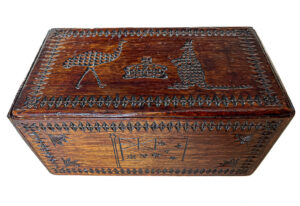
On the box lid was an emu and a kangaroo on either side of a crown and around the edge was a border of triangles, both upright and inverted, separated by a thin line creating a cartouche. The body of each of the emu and kangaroo was faceted so that when you turn them to the light the facets have a silvery glow.
On the front of the box is the Australian flag on a hoist. It is encased in a similar cartouche, in each corner of which are stylised flowers. The other sides of the box have no decoration. The figures are primitive, but the woodworking is that of a skilled craftsman. As a boy, my father-in-law lived on a farm and was one of a large family of sons. He was taught by his mother to sew, knit and crochet – and his fine movement co-ordination was an important attribute. But since he is no longer alive, there is no firm confirmation of provenance.
When I had looked at the box first, originally I thought it was pokerwork. However it is not two-dimensional; the more I turned it over the more I admired it, very fine carving
As has been written attempting to place it in our art heritage: Pokerworking (or pyrography), especially of functional items, reflects early 20th century domestic life and “almost everyone who lived in Australia before World War II seemed to have at least one pokerwork ornament or decorated utilitarian object” Yet it is also an art form which is under appreciated today, despite its significance to social history and the arts and crafts movement. Remember, the next time you see a piece of pokerwork, appreciate the craft involved and don’t discard it so easily!
The Aboriginal people employed pokerworking as a form of decorating, not only of their everyday utensils such the coolamon, but also in the creation of figures, notably the goanna. We have a number of examples of these collected mostly from the desert tribes, which we have scattered around our home.
XBB sounds like a High Speed Train
Americans can “maximize” their protection against XBB and the other variants by staying up to date with their vaccine. What does that mean? Yes, what does that mean, Dr Kelly?
I listened to the Health Minister this week talking about the requirement for testing on travellers coming into Australia from China. Apart from using the terminology of “abundance of caution” at least five times, he then went on to give a curious state of play which suggests that there is some conflict aboard in the Halls of Albanese. Minister Butler was careful to refer to the public health advice of the various chief medical officers, which appeared to give the green light to travellers from China coming into the country, but by the end of his press conference, he was outlining a series of restrictions to reduce the impact of a COVID invasion through Chinese vectors. The amber light is flashing brightly.
Hence, I am surprised that Paul Kelly, the Chief Medical Officer, is opposed to the step-by-step approach to ensure that Australia has some data to work with from these incoming travellers from China (and in fact worldwide), in unknown numbers, vectors seeding the COVID variants around the country. Probably my opposing view may be too harsh – and smacks of the yellow peril fallacy. However, Australia cannot run a public health system blindfolded, even if contact tracing is apparently unworkable and Australia has to rely on testing the water supply, where there is still no nationwide consistency.
The white flag is being waved by the academic experts. As one is reported as saying:
“The virus continues to circulate globally. We do need to monitor for variants carefully, but screening everyone coming from China won’t make any material difference to the state of the transmission in Australia.”
As one suffering from long COVID, who has followed instructions when they have some meaning, why do we keep paying guys like this one proffering such meaningless maunderings?
I am not sure if these two articles below (combined from The Boston Globe and The Washington Post) help much, apart from providing in one sense improved information, raising the level of uncertainty, and wondering whether instead of watching, a course of action could be set out. They do indicate it is not only China where the variants are spreading. The cruise ships one must say are convenient worldwide vectors. Apart from which, both the US and UK have significant outbreaks of a new variant – there are no test requirements
A new coronavirus variant dubbed XBB has swiftly become the dominant form of COVID-19 spreading in the Northeast (of the USA), jumping from about 35 percent of cases during the week ending Dec. 17 to just over half of cases last week, according to CDC data.
Here’s a quick primer on what we know about the variant from The Boston Globe and The Washington Post.
Is XBB more transmissible? Experts say the rapid spread of the XBB variant suggests it’s more adept than its predecessors at evading the immunity that comes from vaccines and infections.
“The most likely explanation is that it’s more transmissible,” said Dr. Jeremy Luban, professor of molecular medicine, biochemistry, and molecular biotechnology at UMass Medical School, in a recent interview.
Who is at greatest risk? As with other recent variants, people who are immunocompromised face greater risk, and the monoclonal antibodies used to treat them do not work against the latest variants, including XBB. That has eliminated an important tool for treating some of the most vulnerable patients.
What can I do to protect myself? As always, experts urge people to get booster shots. The bivalent booster vaccine, which works against the Omicron variant as well as the original form of the virus, appears to be especially effective against XBB, according to a recent small study.
If I test positive for XBB, could I be looking at severe illness? While XBB does not seem to cause more severe illness or death, little is known about the effects of its subvariants, XBB.1 and XBB.1.5, which have turned up in the Northeast, said the assistant dean of research at the New York Institute of Technology College of Osteopathic Medicine’s Jonesboro, Ark., campus, in a recent interview.
What are experts saying about XBB? In a Dec. 23 online column, Dr. Eric Topol, executive vice president of Scripps Research in La Jolla, Calif., noted that the arrival of XBB.1.5 in New York coincided with a marked rise in hospitalizations in that State. He predicted on Tuesday that “XBB will soon be the dominant variant nationwide. A functional @CDCgov would alert the public about the XBB.1.5 variant — which has already established dominance throughout the Northeast — and, with its big growth advantage over BQ.1.1, soon country-wide.”
“Of course, other factors are likely contributing such as waning of immunity, indoor/holiday gatherings, cold weather, lack of mitigation. But it is noteworthy that New York’s [COVID-19] hospital admission rate is the highest since late January,” he wrote. “So we don’t know for sure how much of this is being driven by XBB.1.5, but it doesn’t look favourable.”
Dr. Cyrus Shaphar, the White House’s COVID-19 data director, tweeted on 23rd Dec, that Americans can “maximize” their protection against XBB and the other variants by staying up to date with their vaccines. He also noted that the highest concentration of XBB can currently be found in the north-eastern part of the country.
The University of Minnesota’s Centre for Infectious Disease Research and Policy notes on its website that the CDC’s variant projections for the week ending Dec. 24 show “that the Omicron XBB variant, a recombinant of two BA.2 viruses, now makes up 18.3 percent of sequenced samples, up sharply from the week before. Much of the rise appears to be from two northeastern regions where XBB is now the dominant subtype. XBB has fuelled outbreaks in parts of Asia, including Singapore.”
Regarding XBB, the Centre says, “experts are watching a subvariant called XBB.1.5 that was detected in New York and has a mutation that has been linked to immune escape. Scientists suspect that XBB.1.5 has a growth advantage over BQ.1.1.”
The Centers for Disease Control and Prevention said Friday it is tracking a new variant of concern dubbed XBB.1.5. According to new figures published Friday, it estimates XBB.1.5 makes up 40.5% of new infections across the country.
XBB.1.5’s ascent is overtaking other Omicron variant cousins BQ.1 and BQ.1.1, which had dominated a wave of over the fall. Scientists believe its recent growth could be driven by key mutations on top of what was already one of the more immune evasive strains of Omicron to date.
“We’re projecting that it’s going to be the dominant variant in the Northeast region of the country and that it’s going to increase in all regions of the country,” said Dr. Barbara Mahon, director of the CDC’s proposed Coronavirus and Other Respiratory Viruses Division, in an interview with CBS News.
Mahon said the agency had not listed XBB.1.5 separately in its earlier projections because the strain had not cleared a minimum threshold in the underlying sequences collected by the agency.
The agency’s 40.5% figure is only a projection, Mahon stressed, with a probability interval ranging right now from 22.7% to 61.0%.
XBB.1.5’s prevalence is largest in the Northeast, the agency estimates. Most of the earliest cases from XBB.1.5 recorded in global databases through early November were sequenced around New York and Massachusetts.
More than 70% of infections in the regions spanning New Jersey through New England are now from XBB.1.5, the agency is projecting.
The ascent of XBB.1.5 comes as COVID-19 hospitalizations have accelerated across the U.S. in recent weeks. The pace of new admissions is now worse than this past summer’s peak in several regions, but still lower than at this time last winter.
“There’s no suggestion at this point that XBB.1.5 is more severe. But I think it is a really good time for people to do the things that we have been saying for quite a while are the best ways to protect themselves,” said Mahon.
This month, the Northeast has recorded some of the worst COVID-19 hospital admission rates out of any region in the country. In New England, the CDC says new hospitalizations among Americans 70 and older have climbed to the highest levels seen since early February.
Around 13% of Americans are currently living in areas of “high” COVID-19 Community Levels, where the agency currently urges masking. Los Angeles, Miami, and New York City rank among the biggest counties now at these levels.
Mahon said XBB.1.5’s mutations could be part of driving the increase where XBB had failed to gain a foothold. But she added that other factors, like the higher risk posed by respiratory viruses during the winter holiday season, could also be playing a factor.
 Mahon cited the agency’s recommendations to seek out updated COVID booster shots, as well as taking other precautions like improving ventilation, testing before gathering, or masking in high COVID areas.
Mahon cited the agency’s recommendations to seek out updated COVID booster shots, as well as taking other precautions like improving ventilation, testing before gathering, or masking in high COVID areas.
“So that advice doesn’t change at all. And this time of year is a really good time to be following that advice,” said Mahon.
The XBB.1.5 strain is a spinoff of the XBB variant, itself a “recombinant” blend of two prior Omicron strains, which drove a wave of infections overseas earlier this year.
Earlier this year, the Biden administration had voiced optimism that XBB was unlikely to dominate infections in the country. South Asian nations like Singapore reported that strain appeared to pose a lower risk of hospitalization relative to earlier Omicron variants. Now, the CDC says that increase was driven largely by XBB.1.5. After ungrouping XBB.1.5, the agency estimates all other XBB infections currently make up just 3% of cases nationwide.
Beyond its parent, XBB.1.5 has an additional change called S486P. Chinese scientists have reported the mutation appears to offer a “greatly enhanced” ability to bind to cells, which could be helping drive its spread.
“We’ve been tracking XBB for weeks as I said, and it was XBB and XBB.1, and they really weren’t taking off. They weren’t increasing rapidly in proportion,” said Mahon. Before evolving into XBB.1.5, XBB had already ranked among the strains with the largest immune-evasion relative to earlier major Omicron strains. Scientists in Japan reported this week that XBB appeared to be “the most profoundly resistant variant” to antibodies from breakthrough infections of any lineage they had tested.
Like BQ.1, XBB is resistant to a roster of monoclonal antibody drugs that doctors had relied on earlier in the pandemic before they were sidelined by new variants. Data from a team of federally-backed researchers earlier this year found the current batch of updated bivalent boosters appear to offer better “neutralizing activity” against Omicron variants, including XBB, when testing antibodies in the blood of people who got the updated booster compared to after only the original vaccines.

“We expect that the bivalent booster will provide protection against XBB.1.5 as it has against other Omicron subvariants. And if people haven’t gotten it yet, this is a great time to do it,” Mahon said.
However, antibody responses in that study were also worse for XBB compared to the other strains they studied.
“The XBB.1.5 variant would look similar to the XBB we tested in our study. The R346T/I mutation within the spike increases the ability of the virus to evade antibodies more efficiently,” Emory University’s Mehul Suthar told CBS News in an email.
For antiviral drugs like Pfizer’s Paxlovid, data from another team of scientists in Japan suggest they will retain efficacy against XBB. “With what we know so far, XBB.1.5 has not acquired any new mutations in the viral protein targeted by Paxlovid. The susceptibility of XBB.1.5 against Paxlovid should not change, given the current data,” emailed by the University of Wisconsin-Madison’s Peter Halfmann.
Everyone seems to be watching XBB.1.5 and hopefully the advice about the effectiveness of current vaccines and antivirals is borne out – in Australia we just need wider access to the new bivalent booster and the antivirals.
Mouse Whisper
Do you know what the Health Minister Butler said to his pet kangaroo at the side of the Southern Expressway?
“A Bound with Caution!”
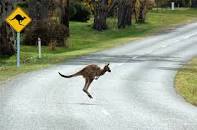


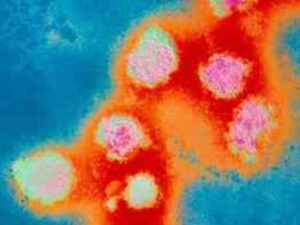
 As I probably mentioned in a previous blog, I accumulated New Scientist magazines, even though I never had time to read them. After I started writing the blog, as the magazines were conveniently stacked in the office, they served as a source of some of my material, even though some were 20 or more years old. Most of the issues came in an era before the modern technologies, and therefore there was a certain quaintness. Having fulfilled this purpose of providing source material, I broke the link which bound me in this state of habituation and threw them out.
As I probably mentioned in a previous blog, I accumulated New Scientist magazines, even though I never had time to read them. After I started writing the blog, as the magazines were conveniently stacked in the office, they served as a source of some of my material, even though some were 20 or more years old. Most of the issues came in an era before the modern technologies, and therefore there was a certain quaintness. Having fulfilled this purpose of providing source material, I broke the link which bound me in this state of habituation and threw them out.



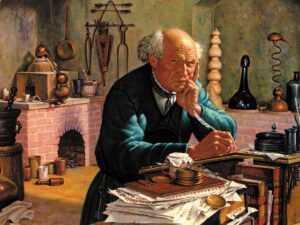 Thinking through what Minister Hazzard had said, what would have happened if a State Health Minister had said during the polio pandemic – “It’s inevitable that everybody’s going to get it?” You could barely hear this Metaphor through the swishing of iron lungs and the clanking of braces attached to children’s limbs.
Thinking through what Minister Hazzard had said, what would have happened if a State Health Minister had said during the polio pandemic – “It’s inevitable that everybody’s going to get it?” You could barely hear this Metaphor through the swishing of iron lungs and the clanking of braces attached to children’s limbs.
 The CDC also stressed that because some of the symptoms of both the flu, the coronavirus, and other respiratory illnesses are so similar, testing is required to “tell what the illness is and to confirm a diagnosis,” especially because people can be infected with both the flu and COVID-19 at the same time.
The CDC also stressed that because some of the symptoms of both the flu, the coronavirus, and other respiratory illnesses are so similar, testing is required to “tell what the illness is and to confirm a diagnosis,” especially because people can be infected with both the flu and COVID-19 at the same time. 
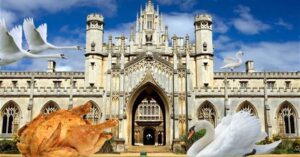
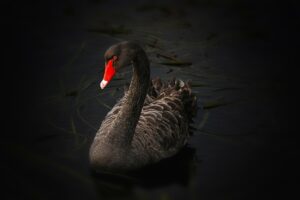
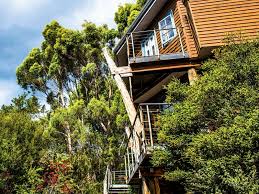
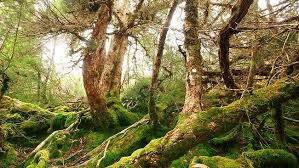

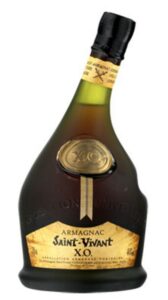



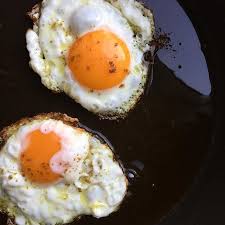
 One of the more recent cricketing traditions around Christmas has been the Boxing Day Test in Melbourne, but in 1951, the third test in Adelaide finished on Christmas Day, with only the second defeat of the Australian cricket team since the end of World War 2. The West Indian cricketers broke into a spontaneous calypso. At that time, their major West Indian strike bowlers were:
One of the more recent cricketing traditions around Christmas has been the Boxing Day Test in Melbourne, but in 1951, the third test in Adelaide finished on Christmas Day, with only the second defeat of the Australian cricket team since the end of World War 2. The West Indian cricketers broke into a spontaneous calypso. At that time, their major West Indian strike bowlers were: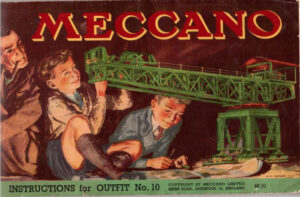 Notwithstanding, my father seemed to be a ghostly presence in my early years during the War when he was bouncing back from naval duty and then disappearing again up North. He came back to graduate as a doctor in early 1946. When I think about it, he seemed to buy my Christmas presents with an eye to himself. I remember the Hornby replica of the Flying Scotsman train; then there was a Meccano Set, much more complicated than my competence or interest. From a child anyway I was never much interested in building things or gadgets. My father on the other hand loved gadgets; and he liked collecting them and books.
Notwithstanding, my father seemed to be a ghostly presence in my early years during the War when he was bouncing back from naval duty and then disappearing again up North. He came back to graduate as a doctor in early 1946. When I think about it, he seemed to buy my Christmas presents with an eye to himself. I remember the Hornby replica of the Flying Scotsman train; then there was a Meccano Set, much more complicated than my competence or interest. From a child anyway I was never much interested in building things or gadgets. My father on the other hand loved gadgets; and he liked collecting them and books.
